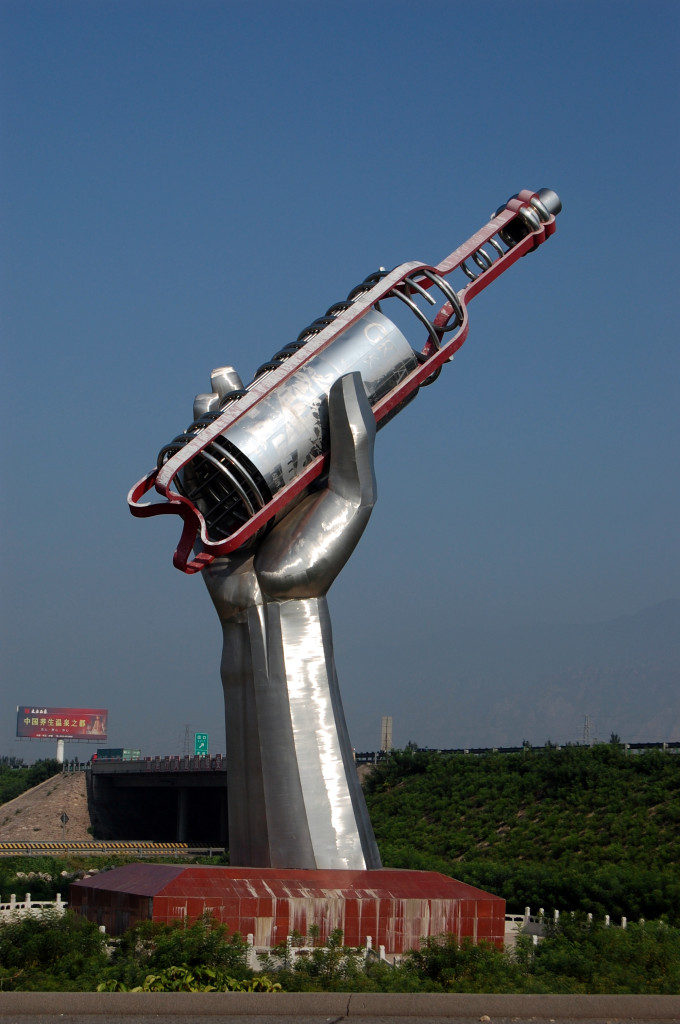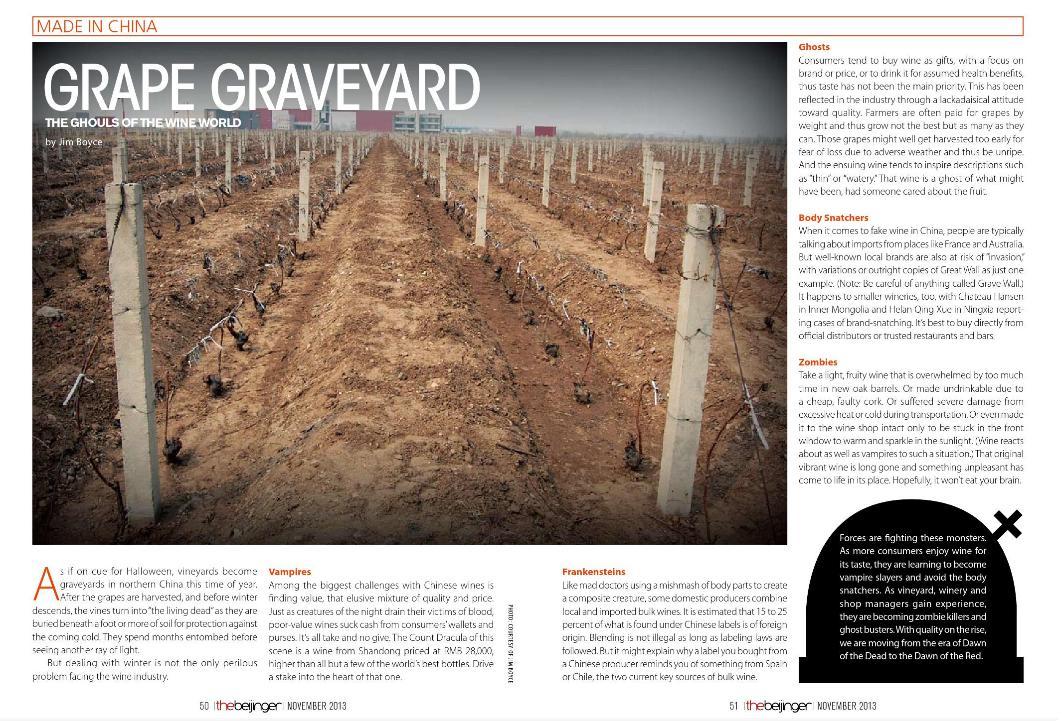~
By Jim Boyce
My third “Made in China” column for The Beijinger magazine takes a cue from Halloween and looks at vampires, zombies, body-snatchers and other monsters of the China wine scene. Full text below. You can also read it by clicking the image above, using the clearer iPad version here, or picking up a copy of the magazine. Here’s the horror story…
~
As if on cue for Halloween, vineyards become graveyards in northern China this time of year. After the grapes are harvested, and before winter descends, the vines turn into The Living Dead as they are buried beneath a foot or more of soil as protection against the coming cold. They spend months entombed before seeing another ray of light. But dealing with winter is not the only monster problem facing the wine industry. Here are a few more.
Vampires
Among the biggest challenges with Chinese wines is finding value, that elusive mixture of quality and price. Just as creatures of the night drain their victims of blood, poor-value wines suck cash from consumers’ wallets and purses. It’s all take and no give. The Count Dracula of this scene is a wine from Shandong priced at rmb28,000, higher than all but a few of the world’s best bottles. Drive a wooden stake into that one.
Frankensteins
Like mad doctors using a mishmash of body parts to create a composite creature, some domestic producers combine local and imported bulk wines. It is estimated that 15 to 25 percent of what is found under Chinese labels is of foreign origin. Blending is not illegal so long as labeling laws are followed. But it might explain why a label you bought from a Chinese producer reminds you of something from Spain or Chile, the two current key sources of bulk wine.
Ghosts
Consumers tend to buy wine as gifts, with a focus on brand or price, or to drink it for assumed health benefits, thus taste has not been the main priority. This has been reflected in the industry through a lackadaisical attitude toward quality. Farmers are often paid for grapes by weight and thus grow not the best but as many as they can. Those grapes might well get harvested too early for fear of loss due to averse weather and thus be unripe. And the ensuing wine tends to inspire descriptions such as “thin” or “watery“. That wine is a ghost of what might have been had someone cared about the fruit.
Body Snatchers
When it comes to fake wine in China, people typically talk about imports from places like France and Australia. But well-known local brands are also at risk of “invasionâ€, with variations or outright copies of Great Wall but one example. (Note: Be careful of anything called Grave Wall.) It happens to smaller wineries, too, with Chateau Hansen in Inner Mongolia and Helan Qing Xue in Ningxia reporting cases of brand-snatching. It’s best to buy direct from official distributors or trusted restaurants and bars.
Zombies
Take a light fruity wine that is overwhelmed by too much time in new oak barrels. Or made undrinkable due to a cheap faulty cork. Or suffered severe damage from excessive heat or cold — or both — during transportation. Or even made it to the wine shop intact only to be stuck in the front window to warm and sparkle in the sunlight. (Wine reacts about as well as vampires to such a situation.) That once enjoyable wine is long gone and something unpleasant has come to life in its place. Hopefully, it won’t eat your brain.
While all of these examples make the wine industry in China sound a bit scary, the good news is that forces are fighting these monsters. As more consumers enjoy wine for its taste, they are learning to become vampire slayers and avoid body snatchers. As vineyard, winery and shop managers gain experience, they are turning into zombie killers and ghost-busters. And with quality on the rise in China, we are moving from the era of Dawn of the Dead to that of Dawn of the Red.
See also:
- Made in China: Restaurants, bars and hotels with Chinese wine
- Made in China: Six Chinese wines for rmb700 in Beijing

Sign up for the Grape Wall newsletter here. Follow Grape Wall on LinkedIn, Instagram, Facebook and Twitter. And see my sibling sites World Marselan Day, World Baijiu Day and Beijing Boyce. Grape Wall has no advertisers, so if you find the content useful, please help cover the costs via PayPal, WeChat or Alipay. Contact Grape Wall via grapewallofchina (at) gmail.com.

Leave a Reply
You must be logged in to post a comment.